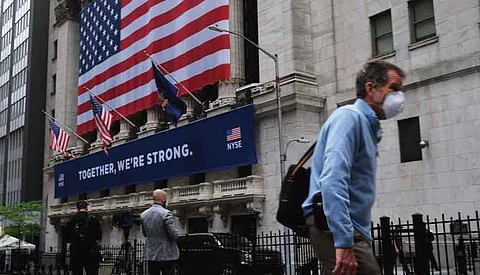
- Home
- About
- Globally Speaking
- Videos
- Podcast
- Geopolitics
- Industry
- SIGN UP

In this third instalment of the series on the outlook for equity markets, financial expert B.V. Krishnan discusses the positive factors, interventions, and their impact on the direction of the equity markets.
This is the third in the six-part series on the outlook for equity markets. In the first part, we covered a couple of historical comparatives that were focused on market corrections and valuations. In the second part, we covered the fundamental economic outlook. Both directionally point to the possibility of corrections ahead in the equity markets. In this piece, we will cover the positive factors for equity markets, which are counter-balancing those negative factors.
Related stories:
To sell or not to sell, that is the question
It is a long and grinding road ahead
We have witnessed record interventions by the US Federal Reserve. The Fed balance sheet has expanded by $ 2.7 trillion in just a couple of months (see Chart 1) and will likely expand further just to reflect the effects of the announced measures.

This compares with the $ 1.4 trillion that the balance sheet expanded by during the global financial crisis, between September and December 2008. At the margin, equity markets are most sensitive to liquidity. Chart 2 captures the movement of the S&P 500 (with an offset of 6 months to reflect a lag) alongside the size of the Federal Reserve Balance Sheet from 2007 through to 2014, which was the previous expansionary phase, which saw the balance sheet expand from $ 870 billion to $ 4.3 trillion. As can be seen, the equity market rally during that period had a strong and direct correlation to the growth of the Fed balance sheet during that period. As a reminder, this was a period during which the Fed was consistently deploying quantitative easing to keep up the liquidity in the economy.

Relief and stimulus measures announced thus far by the US Federal Government top $ 2.5 trillion. So, the measures between the Fed and the US Government provide gargantuan amounts of liquidity into the market, backstop various types of risks (including those of fallen angels, ie, credits that are downgraded from investment grade to junk category) in size, and importantly signal to the market that the central bank and the government are willing to do whatever it takes. That is an exceptionally strong combination of things to counter the Covid-19 impact on the economy and markets. They have been directed both at putting money in the hands of people, as well as staving companies from potential bankruptcies for want of liquidity as revenues slid following the lockdowns. The markets, therefore, have just had to respond with a strong rally from the March lows, which were triggered on account of a fear of a demand slowdown as well as large-scale bankruptcies.


